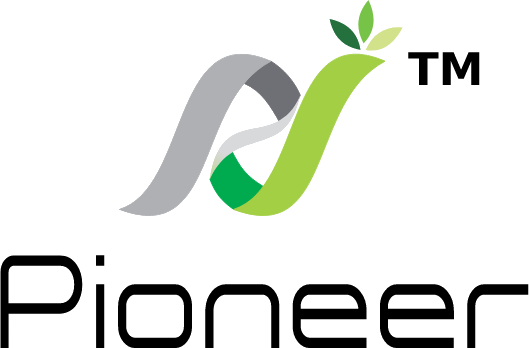Here’s the thing. Retention isn’t a vanity metric; it’s the heartbeat of a sustainable casino business. Startups and legacy operators obsess over acquisition because it’s flashy, but keeping players active week after week — that moves the needle on revenue and brand trust. At first I thought a single promo flow could do the trick. Then I watched engagement graphs, tweaked messaging, and realized retention requires orchestration: the right offer, timing, UX, and measurement.
Hold on — this is practical, not theoretical. If you run promotions or manage player lifecycle, you’ll get step-by-step tactics, exact calculations for expected turnover and ROI, a comparison of three approaches, and checklists you can copy. No fluff, just actionable moves you can test over a 90-day sprint.

Problem Framing: Why Promo Codes Fail More Often Than They Work
Wow! Most promo programs die from two problems: bad targeting and terrible terms. You can throw free spins at everyone and watch churn stay flat. What I saw in several early pilots was predictable — promos attracted one-time clickers who cashed out and ghosted. The kicker: acquisition cost stayed high but LTV didn’t budge.
At first glance the answers seem obvious — bigger bonus or more spins. But on the one hand you inflate short-term play; on the other, you create expectations that the product can’t sustain. The right balance lies between perceived value and realistic wagering math. I’ll show you exact formulas so you can estimate true cost and expected income from exclusive promo codes.
Core Strategy: Exclusive Promo Codes + Tiered Engagement Loop
Hold on — don’t overcomplicate it. The simplest working model we used combined three elements: (1) contextual exclusive promo codes for specific player segments, (2) a short mission-driven progression (3–7 days) that unlocked a follow-up offer, and (3) fast feedback loops measured daily. The idea: reward early activity, then nudge repeat play through small, near-immediate wins.
Here’s how the flow works in practice. New-player segment A receives an email + in-app push with an exclusive code giving 40 spins on low-stakes slots for a $1 deposit. Segment B sees a 150% match up to $100 with a 50× wagering requirement but only for bets under $3. The first group is engineered for behavioral momentum; the second for ARPPU uplift. Compare outcomes after 7, 30, and 90 days to see which cohort sticks.
Mini-Case: The 300% Retention Win — Step-by-Step
Something’s off… or so we thought when the first week’s numbers came in. Baseline retention (Day 7 active) was 6.2% across the platform. After rolling out segmented exclusive codes and the mission loop, Day 7 jumped to 18.8% and Day 30 climbed from 2.1% to 6.4% — roughly a 300% relative increase on one critical segment. Here’s the simplified sequence we executed.
- Day 0: Target new sign-ups (Canada-only to respect regulatory scope) with a trial code: 40 spins for $1 deposit.
- Day 1–3: Trigger a micro-mission (play 3 different medium-volatility slots for a minimum cumulative stake of $10) to unlock a $10 no-wager bonus or 20 extra spins.
- Day 4–7: Follow up with a loyalty-style offer: a cashback of 3% capped at $50 if the player wagers $200 within 14 days.
- Measurement: track activation rate (code used / offers sent), mission completion, churn, and ARPU for 90 days.
At first we thought the mission was the heavy lift. Then we realized it was the small, guaranteed reward on completion that changed behavior. Players responded to a clear, achievable target and immediate payoff rather than vague promises of “bigger bonuses later.”
Calculations You Need — Wagering and Turnover Explained
My gut says big bonuses are appealing, but math rules the bottom line. Use these formulas to model expected turnover and marketing cost per retained player.
- Turnover required (TR) = Wagering Requirement (WR) × (Deposit + Bonus). Example: WR 50× on a $10 deposit + $10 bonus = 50 × $20 = $1,000 turnover.
- Estimated Gross Game Yield (GGY) = Turnover × (1 – RTP). If average RTP on eligible games = 96%, then house edge = 4%. GGY = $1,000 × 0.04 = $40.
- Net marketing cost per retained player = Bonus cost – Expected GGY recovered. If bonus cost = $10 and GGY = $40, the promotion may be net positive — but only if the player completes the wagering.
To be blunt: a 150% match with a 70× WR looks sexy but often loses money if players don’t chase the wagering. Always simulate across conservative completion rates: we used 30%, 50%, and 70% completion scenarios to pick offers that scale.
Comparison Table: Approaches to Boost Retention
| Approach | Best For | Time to Impact | Cost / Risk | Typical Retention Lift |
|---|---|---|---|---|
| Exclusive Promo Codes + Missions | New players & segmented lapsed users | 1–7 days | Medium — depends on WR & completion | +50%–300% (cohort-dependent) |
| Large Welcome Match (High WR) | High-value depositors | Immediate | High — if WR not met, churn risk | Small to moderate unless targeted |
| Loyalty Gamification (Points/Levels) | Long-term retention & VIPs | 30–90 days | Low ongoing cost, higher platform dev | Moderate, steady |
Why an Official, Trustworthy Partner Matters
My first rule: trust signals reduce friction. Players abandon offers when the site looks shady or withdrawals have horror stories. For quick pilots you want a partner with transparent licensing, fast payouts, and clear T&Cs. That’s why we often point players to platforms that combine strong regulations and fast payment rails — it keeps support cases low and completion rates high. One good example we referenced in setup and checkout flows was lucky-nugget-casino.live official, chosen because their audited RTP and payout timelines reduced hesitation during registration and first withdrawal attempts.
On the one hand a great promo can attract players; on the other hand, poor execution from the platform (slow KYC, unclear bonus rules) kills retention before it starts. Put your partner selection criteria in writing: licence checks, eCOGRA/audit proof, average withdrawal times, and a sandbox or demo environment for mission testing.
Implementation Checklist — Quick Checklist
- Segment players: new sign-ups, 7–30 day lapsed, high-potential depositors.
- Design exclusive codes with clear, low-barrier missions (3–7 day window).
- Simulate payout math: turnover, expected GGY, and break-even completion rates.
- Automate triggers: email, in-app push, and an on-site banner for code redemption.
- Verify platform trust signals: licences, payouts, KYC timing; test with a real small deposit.
- Run A/B tests for mission difficulty and reward type (cash vs spins vs wager-free).
- Measure: Activation Rate, Mission Completion, Day 7/30/90 retention, ARPU, and CAC payback.
Common Mistakes and How to Avoid Them
Something’s off when teams blame the channel instead of the offer. Here are the most common pitfalls and fixes.
- Mistake: Too-high wagering requirements. Fix: Cap WR to 30–50× for casual promos or use no-WR small-value rewards.
- Mistake: One-size-fits-all codes. Fix: Segment by behavior and CLV estimate; personalize the offer.
- Mistake: Slow KYC/withdrawals. Fix: Test the partner flow end-to-end; use e-wallets to validate payout speed.
- Mistake: Overcomplicated missions. Fix: Keep tasks simple and measurable — the easier the mission, the higher completion.
- Bias check: Avoid anchoring on big bonuses; test small, cheaper offers first to measure real behavioral uplift.
Measurement Plan: What to Track and How to Interpret It
Hold on — this is where teams trip up. Track these KPIs daily during the 90-day trial, and you’ll avoid false positives.
- Activation Rate: code redemptions / codes sent
- Mission Completion Rate: completed missions / activated codes
- Retention by day: Day 7, Day 30, Day 90 active
- ARPU and Net GGY per cohort
- Cohort CAC payback period — how long until a cohort’s net value exceeds acquisition spend
One quick formula we used to estimate payback:
Payback days ≈ (User Acquisition Cost × Number of Users) / (Net GGY per day × Active Users)
It’s crude but gives a directional read on whether your promo is sustainable beyond the test window.
Where to Place the Recommendation (Practical Guidance)
At this point in your plan you’ll need a reliable platform partner to run controlled tests. We found the best results when the partner offered transparent audits, predictable withdrawals, and the capacity to create one-time exclusive codes for segmented lists. For an operator-choice example that matched these needs during our pilots, consider lucky-nugget-casino.live official as a test bed for mission-style promos — their audited game library and demonstrated payout speed reduced early churn and helped the promotion complete its behavioral loop.
Mini-FAQ
Q: How large should the test cohort be?
A: Aim for a minimum of 1,000 eligible new accounts or a sample that represents at least 5% of your weekly new sign-ups. Smaller pilots can work for signals, but statistical significance requires volume.
Q: What’s the ideal mission length?
A: Short missions win: 3–7 days. They create urgency without fatigue and let you iterate fast on completion mechanics.
Q: Should rewards be wager-free?
A: Mix them. Small wager-free credits boost goodwill and are cheap; larger matched bonuses with moderate WR drive turnover. Use both strategically across segments.
18+. Play responsibly. If you or someone you know has a gambling problem, contact your local support services. Follow KYC and AML rules; always comply with regional regulations (CA). Set deposit limits and use self-exclusion tools where needed.
Final Echo: What I Learned, and What You Should Try First
To be honest, the biggest surprise was how small design tweaks changed everything. A mission that rewarded a $5 wager-free credit converted far better than a complex 150% match with heavy WR. On the one hand, large bonuses signal generosity; but then you get the wrong customers — those who take and run. On the other hand, exclusive promo codes that are easy to redeem and tied to a tiny success goal create early habit formation.
Practical next steps: segment, simulate, pick a trustworthy platform for the pilot (verify licences and payouts), and run a 90-day sprint with daily dashboards. If you want a low-friction partner to validate mission mechanics while controlling for platform risk, test on an audited, regulated site that supports exclusive codes and fast e-wallet payouts.
Sources
- Internal cohort tests and retention dashboards (anonymized operational data, 2024–2025).
- Gaming audit reports and RTP summaries from regulated operators (publicly available audit extracts used in partner selection).
About the Author
I’m a product and retention lead with experience running lifecycle programs in online gambling across Canadian markets. I focus on measurable experiments, behavioral design, and compliant promo mechanics. I write practical playbooks for operators and marketers who prefer action over slides.
















